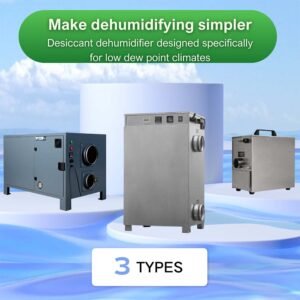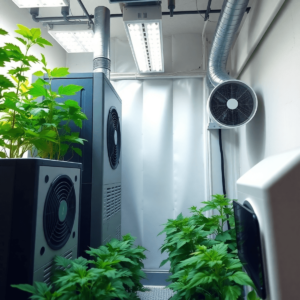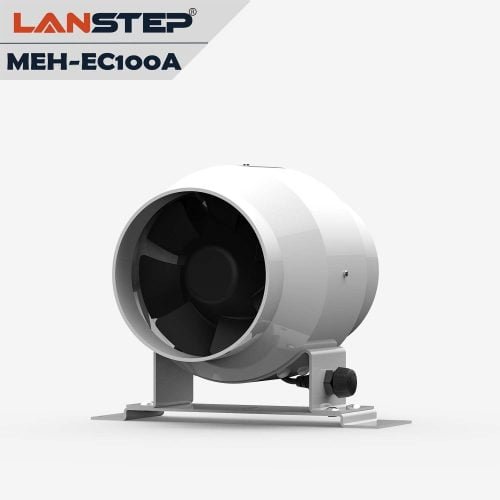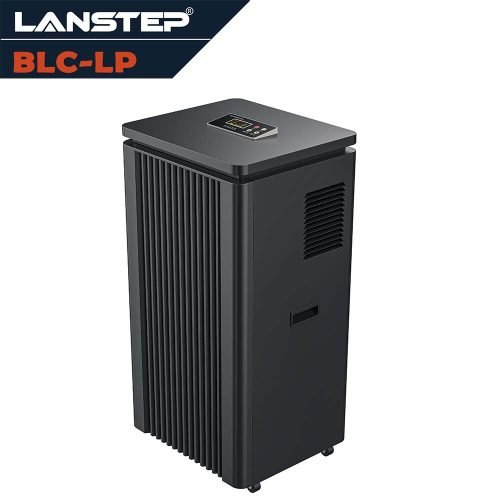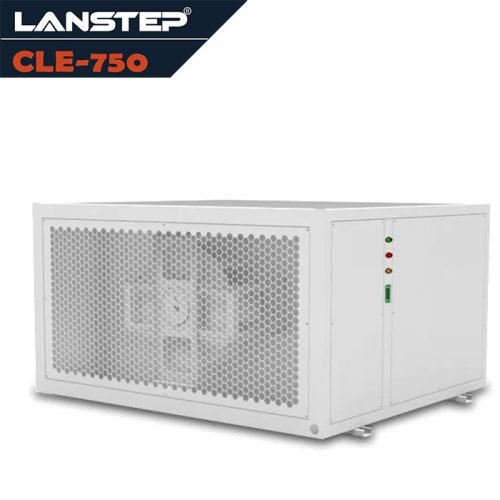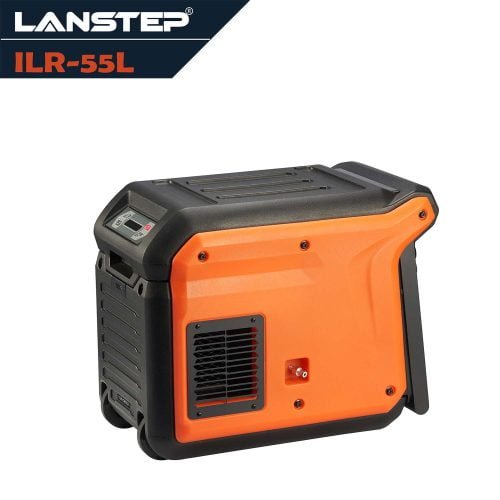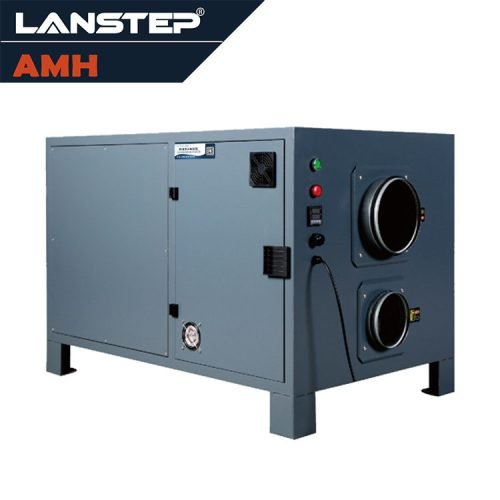Introduction
In the vibrant world of cannabis cultivation, maintaining the right environmental conditions is crucial. Humidity control is a key aspect of this, as it directly affects plant health, growth rate, and ultimately, yield quality. The delicate balance in grow rooms ensures that plants thrive without falling victim to mold or dehydration.
Dehumidifiers play a crucial role in achieving this balance. By removing excess moisture from the air, they create an optimal environment for cannabis plants to thrive. This not only prevents diseases such as powdery mildew but also improves nutrient absorption and photosynthesis efficiency. For example, the CLE500 efficient grow room dehumidifier, which removes up to 500 pints of moisture per day, is specifically designed for such needs.
As we enter 2024, the market for grow room dehumidifiers is expected to see innovation and growth. Advances in technology promise more energy-efficient and advanced solutions. Among these are improvements like AI integration, which allows for precise environmental adjustments, meeting the specific needs of modern growers.
However, humidity control isn’t the only factor to consider in creating the ideal grow room environment. The use of inline duct fans can greatly enhance air circulation and temperature control, further optimizing conditions for plant growth.
This article will explore topics such as “How to Choose a Dehumidifier for Grow Rooms? 2024 Market Trends and Product Comparisons.” It will guide you through the intricacies of selecting the ideal dehumidifier tailored to your cannabis cultivation needs. By understanding these trends and technologies, we can unlock new opportunities for growth and sustainability in controlled environments.
Understanding Humidity Control in Grow Rooms
Humidity control is a critical aspect of successful cultivation in a grow room. It’s not just about creating a comfortable environment; maintaining the right humidity levels is essential for the health and productivity of plants. By managing humidity, growers can avoid problems like mold, mildew, and other harmful organisms that thrive in excessively damp conditions.
Why Optimal Humidity Levels Matter
1. Plant Growth and Development
Different stages of plant growth require specific humidity levels. For example, seedlings flourish in higher humidity (around 70-80%) to support their delicate structures, while flowering plants benefit from lower levels (40-50%) to enhance resin production.
Optimal Humidity Ranges by Growth Stage:
- Cloning/Propagation: 75-85% RH
- Vegetative Growth: 60-70% RH
- Early Flowering: 50-60% RH
- Late Flowering: 40-50% RH
Higher humidity during early growth stages helps:
- Reduce transpiration stress
- Promote stronger root development
- Support cellular expansion
- Maintain leaf turgor pressure
During the flowering phase, lower humidity levels:
- Encourage essential oil production
- Reduce the risk of bud rot
- Improve trichome development
- Enhance overall flower quality
Pro Tip: Monitor your plants for signs of humidity stress, such as leaf curling or wilting, and adjust levels accordingly. Using a high-quality hygrometer is essential for accurate measurements.
Understanding these stage-specific requirements allows growers to create optimal environmental conditions that support robust plant development while maximizing yield potential. Modern climate control systems can be programmed to automatically adjust humidity levels as plants progress through their growth cycle.
2.Disease Prevention and Environmental Management
High humidity can lead to moisture buildup on leaves, providing an ideal environment for harmful fungi and bacteria to thrive. By maintaining optimal humidity levels, these risks can be minimized, protecting the health of the crop. Here’s what you need to know about humidity-related plant diseases:
Common Humidity-Related Issues:
- Powdery Mildew – appears as white, powdery spots on leaves
- Botrytis (Gray Mold) – forms grayish-brown fuzzy growth
- Root Rot – develops in consistently wet soil conditions
- Leaf Spot Diseases – creates dark spots with yellow halos
Prevention Strategies:
- Maintain proper air circulation using oscillating fans
- Install dehumidifiers in grow spaces
- Prune dense foliage to improve airflow
- Water at soil level to keep leaves dry
Pro Tip: Keep leaf surfaces dry during dark periods when temperatures typically drop to prevent condensation formation.
Warning Signs of Excessive Humidity:
- Water droplets forming on leaf surfaces
- Yellowing lower leaves
- Stunted growth
- Visible mold or mildew
- Musty odors in the growing area
Implementing proper spacing between plants and scheduling watering during morning hours can significantly reduce disease pressure in high-humidity environments.
How Humidity Affects Plant Health and Yield
A well-controlled environment can greatly improve plant vigor and productivity:
- Photosynthesis Efficiency: Proper humidity ensures that stomata on leaf surfaces remain open, allowing for the uptake of CO2 necessary for photosynthesis. This process directly impacts plant growth rates and biomass accumulation.
- Optimal humidity ranges (50-70%) maximize CO2 absorption
- Well-regulated moisture levels prevent stomatal closure during peak growing hours
- Enhanced photosynthetic rate leads to faster vegetative growth
- Nutrient Uptake: Humidity influences transpiration rates—the mechanism by which plants absorb water and nutrients from the soil. Balanced humidity levels promote efficient nutrient transport within the plant system.
- Proper moisture levels support consistent nutrient movement through xylem tissue
- Essential minerals like calcium and magnesium depend on steady transpiration
- Root pressure and nutrient absorption improve under ideal humidity conditions
- Cell Development: Environmental moisture directly affects cellular expansion and division:
- Adequate humidity supports proper cell turgor pressure
- New tissue formation accelerates under optimal moisture conditions
- Balanced water relations promote stronger cell wall development
- Reproductive Success: Humidity plays a vital role in flowering and fruit development:
- Pollen viability increases within appropriate moisture ranges
- Fruit set improves with stable humidity levels
- Seed development benefits from consistent moisture conditions
Important: Monitor humidity levels during different growth stages, as requirements change throughout the plant’s life cycle. Seedlings typically need higher humidity (70-75%), while flowering plants prefer slightly drier conditions (40-50%).
Understanding Vapor Pressure Deficit (VPD)
Vapor Pressure Deficit (VPD) is a crucial concept in managing temperature and humidity in grow rooms:
- Definition and Importance: VPD refers to the difference between the moisture content in the air and its maximum potential moisture-holding capacity when saturated. It serves as an indicator of how much moisture plants are losing through evaporation.
- Optimizing VPD for Growth: Maintaining a balanced VPD ensures that plants transpire at optimal rates. Low VPD may result in excessive water retention leading to root disease, while high VPD can stress plants by causing excessive water loss.
By mastering these aspects of humidity control, growers can turn challenges into opportunities for innovation—improving both the quality and quantity of yields in their grow rooms.
Types of Dehumidifiers for Grow Rooms
1. Refrigerative Dehumidifiers
In the complex dance of controlling the environment in grow rooms, refrigerative dehumidifiers play a crucial role. These devices are designed to remove excess moisture by using refrigeration principles, similar to how traditional air conditioning systems work.
Working Principle and Components
Refrigerative dehumidifiers operate on a cycle of cooling and reheating. Here’s how it works:
- Air is drawn into the unit.
- The air passes over evaporator coils filled with a refrigerant.
- As the air cools, its ability to hold moisture decreases, causing condensation on the coils.
- The condensed water is collected and drained away.
Key components of this system include:
- Compressor: The heart that drives the refrigeration cycle.
- Evaporator Coils: Where air is cooled and moisture condenses.
- Condenser Coils: Where heat absorbed in the evaporator is released.
- Fan: Ensures continuous airflow through the system.
This process not only removes moisture but also slightly warms the air before releasing it back into the grow room.
Benefits and Drawbacks for Cannabis Cultivation Environments
Refrigerative dehumidifiers offer several advantages:
- Efficiency in High Humidity: Particularly effective in environments with high humidity levels, making them suitable for cannabis cultivation which often requires high degrees of humidity management.
- Cost-effectiveness: Generally more affordable upfront compared to some advanced technologies like LANSTEP’s continuous run dehumidifiers.
However, these benefits come with certain drawbacks:
- Energy Consumption: They can be energy-intensive, particularly under continuous operation, impacting operational costs significantly.
- Temperature Sensitivity: Performance can dip in cooler environments since efficiency drops as ambient temperatures decline.
Understanding these factors is important for growers who want to balance initial investments with long-term operational efficiencies.
Energy Consumption Considerations with Refrigerative Units
Because refrigerative dehumidifiers rely on refrigeration cycles, they inherently have higher energy demands. This raises important questions about sustainable practices and cost management within grow rooms. Balancing energy efficiency with effectiveness becomes a central theme — one where technological advances like LANSTEP’s TPER technology may offer new solutions by enhancing energy recovery and reduction.
Choosing the right dehumidifier requires understanding both current market offerings and emerging trends in 2024. The ever-changing landscape demands careful consideration of each option’s impact on both yield quality and operational sustainability — a task made easier with an intimate understanding of how refrigerative dehumidifiers perform in different conditions.
For example, industrial dehumidifiers designed for warehouse use could also be adapted for large-scale grow operations where moisture control is critical. Similarly, whole-house dehumidifiers could provide efficient moisture management across extensive grow areas.
2. Desiccant Dehumidifiers
Understanding the details of desiccant dehumidifiers opens up new possibilities for those looking to create the perfect grow room environment. Unlike traditional dehumidifiers that use refrigeration, desiccant systems use special materials called desiccants to absorb moisture from the air. These desiccants, such as silica gel, have the ability to attract and hold water vapor, keeping humidity levels just right.
Advantages for Environmentally Conscious Growers:
- Energy Efficiency: Desiccant dehumidifiers are known for their energy efficiency, especially in cooler climates where refrigerative dehumidifiers may not work as well. By eliminating the need for a compressor and reducing reliance on refrigerants, these systems meet strict energy efficiency standards.
- Emissions Reduction: The operation of these units results in lower emissions, making them an environmentally friendly choice for growers dedicated to sustainable practices.
Commercial Applications:
Desiccant dehumidifiers are particularly useful in large-scale commercial settings where precise control of humidity is crucial. Industries such as pharmaceuticals and food storage, which have strict environmental requirements, often use these systems to ensure product quality. In cannabis cultivation, they excel by maintaining low humidity levels necessary for preventing mold and mildew without using excessive energy.
When deciding how to choose a dehumidifier for your grow room, it’s important to consider both desiccant and refrigerative options. Each system has its own advantages that are suited to specific conditions and operational priorities. As we look at market trends and product comparisons for 2024, it becomes clear that understanding the specific needs of your grow room will help you make an informed decision.
For example, if you need powerful solutions to improve airflow and ventilation efficiency alongside your dehumidification systems, you might want to check out INA-EC200-8 inch Inline Duct Fans. These duct booster fans are specifically designed to enhance airflow in your duct system.
On the other hand, if you require high efficiency and large capacity portable commercial size dehumidifiers for effective moisture control, LANSTEP offers commercial size dehumidifiers that ensure air quality and prevent mold growth.
In the world of medical cannabis cultivation, it’s important to remember that while some people believe medical cannabis is just an excuse for recreational use (source), maintaining optimal environmental conditions in grow rooms is still crucial for successful cultivation.
Key Features to Consider When Choosing a Dehumidifier for Your Grow Room
Selecting a dehumidifier that aligns with the unique demands of your grow room is crucial to achieving optimal plant health and productivity. Each aspect of your choice carries weight in the delicate balance of your horticultural environment.
Capacity Selection Aligned with Space Requirements
Capacity is a fundamental feature when choosing a dehumidifier. It determines how efficiently the device can extract moisture from the air within a given time frame, usually measured in pints per day. A mismatch here can lead to insufficient humidity control or unnecessary energy consumption.
Consider the volume of your grow room, existing humidity levels, and the type of plants being cultivated:
- Large Grow Rooms (500+ sq ft)
- Require 70+ pints per day capacity
- Best suited for commercial-grade dehumidifiers
- May need multiple units for even distribution
- Medium Spaces (250-500 sq ft)
- 50-70 pints daily capacity recommended
- Ideal for semi-professional setups
- Consider placement for optimal airflow
- Small Grow Areas (< 250 sq ft)
- 30-50 pints daily capacity sufficient
- Perfect for hobby growers
- Look for compact, efficient models
Environmental Factors Affecting Capacity Choice:
- Plant density and transpiration rates
- Watering frequency and methods
- Ambient temperature variations
- Ventilation system efficiency
- Seasonal humidity fluctuations
Pro Tip: Calculate your space’s specific needs using this formula: Square footage × Average daily moisture production × 0.0833 = Minimum pint capacity needed
Remember that oversizing isn’t always better – it can lead to:
- Excessive energy consumption
- Frequent cycling on/off
- Uneven moisture removal
- Higher operational costs
- Potential temperature fluctuations
- When measuring your space, include vertical height in calculations, as moisture tends to accumulate differently at various levels within your grow room.
Energy Ratings and Operational Cost Implications
Understanding energy efficiency is essential, as dehumidifiers are often operational for extended periods. The energy rating of a unit provides insight into its power consumption relative to its performance—typically expressed as kilowatts per pint of water removed.
Higher efficiency models may have a greater upfront cost but offer long-term savings on electricity bills, aligning with finding energy-efficient solutions for grow rooms. Energy-efficient units not only reduce operational costs but also contribute to sustainability efforts, an increasingly important consideration for modern growers.
Key Energy Efficiency Metrics
- Energy Factor (EF): Measures water removal efficiency (liters/kWh)
- Integrated Energy Factor (IEF): Accounts for standby power consumption
- ENERGY STAR® Rating: Indicates units that meet strict efficiency guidelines
Cost Analysis Considerations
- Daily Operating Costs
- Average consumption: 3-6 kWh per day
- Typical cost range: $0.30-$0.60 per hour of operation
- Monthly impact: $50-150 added to utility bills
- Long-term Financial Benefits
- Energy-efficient models can reduce consumption by 20-30%
- ROI typically achieved within 12-18 months
- Reduced maintenance costs due to better components
Pro Tip: Monitor your unit’s performance by tracking daily power consumption against moisture removal rates. This helps identify efficiency drops that might indicate maintenance needs.
Advanced Energy-Saving Features
- Smart cycling technology – adjusts operation based on humidity levels
- Auto-defrost mechanisms – prevents unnecessary power consumption
- Variable speed fans – optimize airflow while minimizing energy use
- Humidity-based controls – operate only when necessary
These features work together to maintain optimal growing conditions while keeping operational costs manageable and predictable.
Smart Technology Integration and Real-Time Monitoring Capabilities
The integration of smart technology in humidity management systems represents a significant advancement in environmental control strategies. Features such as real-time monitoring allow growers to receive instantaneous data on humidity levels and make necessary adjustments remotely via apps or connected devices.
Key Smart Features
- WiFi-Enabled Controls: Access your system from anywhere using secure cloud-based platforms
- Data Logging & Analytics: Track historical performance patterns and identify optimization opportunities
- Automated Alerts: Receive notifications when humidity levels exceed preset thresholds
- Integration with Other Systems: Seamless connectivity with ventilation and temperature controls
Advanced Monitoring Capabilities
- Precision Sensors
- ±2% accuracy in humidity readings
- Temperature compensation for reliable data
- Multi-point monitoring for larger spaces
- Mobile Management
- Real-time dashboard views
- Custom scheduling options
- One-touch adjustment features
Pro Tip: Set up automated reports to track weekly performance metrics and identify patterns that might affect your grow room’s efficiency.
 Smart Automation Benefits
Smart Automation Benefits
- Resource Optimization: AI-driven algorithms adjust settings based on historical data
- Predictive Maintenance: System alerts you before potential issues become problems
- Energy Management: Smart scheduling reduces power consumption during peak rate periods
- Environmental Consistency: Maintains stable conditions through automated adjustments
The implementation of IoT (Internet of Things) sensors enables comprehensive environmental mapping, providing detailed insights into microclimates within your grow space. This level of control allows for precise optimization of growing conditions, leading to improved crop quality and consistency.
Advanced Integration Features:
- Climate pattern recognition
- Custom programming interfaces
- Multi-zone control capabilities
- Expandable sensor networks
These technological advancements transform traditional humidity control into a sophisticated, data-driven operation that maximizes efficiency while minimizing human error.
Product Comparisons for Grow Room Dehumidifiers (LANSTEP vs Other Brands)
When looking for the best dehumidifiers for growing cannabis, it’s important to compare different HVAC products designed for grow rooms. The market trends in 2024 show an interesting mix of new technology and practical use. One of the leading brands in this field is LANSTEP, known for its innovative TPER technology that enhances performance.
LANSTEP’s Offerings
LANSTEP stands out with its TPER Technology, which maximizes heat release efficiency, achieving highly efficient dehumidification. This advanced system condenses the maximum amount of water from the air, making it remarkably energy-efficient—up to 40% more than standard dehumidifiers. This translates to significant operational savings and a faster return on investment, especially crucial for cannabis cultivators aiming to optimize yield while minimizing costs.
Key Features
- High-efficiency condenser energy recovery.
- Advanced throttling technology.
- Adaptability to broader dew point ranges.
- Superior performance in low-temperature and low-dew-point conditions.
The CLE Series by LANSTEP exemplifies these qualities, offering models like the CLE210, CLE380, CLE500, and CLE750. These units are designed for high efficiency and reliability, suitable for both small-scale growers and industrial applications.
Comparative Evaluation: LANSTEP vs Major Players
Comparing LANSTEP with major players such as LG Electronics and Honeywell offers valuable insights into how these giants stack up against each other in terms of price and efficiency.
LG Electronics
Known for their state-of-the-art HVAC systems, LG offers dehumidifiers with robust build quality and advanced features like smart connectivity. However, they may not offer the same level of specialization that LANSTEP provides specifically for cannabis cultivation.
Honeywell
Renowned for reliability and effectiveness in commercial settings, Honeywell dehumidifiers often boast user-friendly interfaces and consistent performance. Yet, when it comes to energy efficiency tailored specifically towards cannabis growth environments, LANSTEP’s TPER technology offers a distinctive advantage. For instance, the CLE210 efficient grow room dehumidifier from LANSTEP is designed to remove up to 210 pints per day at RH60% and 80℉, making it ideal for maintaining optimal humidity levels in cannabis grow spaces.
Key Differentiators
- Price: While LG and Honeywell offer competitive pricing structures that appeal to a broad consumer base, LANSTEP’s focus on cannabis-specific needs can justify a premium investment due to its specialized efficiencies.
- Efficiency: The TPER technology utilized by LANSTEP ensures not only cost savings but also a more controlled environment conducive to high-quality yields—a critical factor not always matched by generalist brands.
Understanding these differences is crucial when deciding how to choose a dehumidifier for grow rooms amidst changing market conditions. As new technologies emerge in 2024, it’s important for those looking to improve their grow room environments to stay informed about specific product capabilities.
In addition to dehumidifiers, LANSTEP also specializes in providing high-quality inline duct fans, which can further enhance the ventilation solutions in grow rooms. Their products have been successfully implemented in various settings including museums where precise humidity control is crucial as seen in this application.
Installation Options and Considerations for Grow Room Dehumidifiers (Fixed vs Portable Units)
When it comes to installing dehumidifiers in your grow room, you have two main options: fixed units and portable units. Each type has its own advantages that cater to different needs.
Fixed Units:
- Space Optimization: Fixed units are ideal for larger grow rooms where permanent installation can maximize space efficiency and integrate seamlessly with existing infrastructure. These units can be mounted on walls or ceilings, freeing up valuable floor space for plant cultivation and workflow optimization.
- Accessibility and Maintenance: While fixed units may be more challenging to access for routine maintenance, they provide consistent humidity control with minimal daily intervention. Regular maintenance schedules can be established to ensure optimal performance through:
- Quarterly filter replacements
- Annual coil cleaning
- Bi-annual system inspections
Installation Requirements: Professional installation is typically required for fixed units to ensure proper connectivity with ductwork and electrical systems, enhancing long-term reliability. Key installation considerations include:
- Structural Support: Proper mounting brackets and reinforcement may be needed for ceiling or wall installation
- Drainage Systems: Permanent condensate lines must be installed with appropriate slope
- Electrical Requirements: Dedicated circuits and proper voltage requirements must be met
- Ventilation Integration: Coordination with existing HVAC systems for optimal airflow patterns
- Access Points: Strategic placement to allow for future maintenance needs
Pro Tip: When planning fixed unit installations, factor in a minimum of 3 feet of clearance around service panels for maintenance accessibility.
System Integration Benefits:
- Automated climate control capabilities
- Enhanced energy efficiency through system synchronization
- Reduced noise levels due to proper isolation mounting
- Improved air distribution through engineered ductwork
- Better temperature consistency throughout the grow space
Portable Units:
- Flexibility: Portable units offer the flexibility to move between different areas in the grow room or even transport across facilities, adapting to changing operational demands. Their mobility enables quick response to humidity hotspots and seasonal adjustments.
- Ease of Use: Designed for straightforward setup, portable units are often plug-and-play, requiring less technical expertise for installation. Most models feature intuitive control panels and simple maintenance procedures.
Space Considerations: While portable units may occupy floor space, potentially limiting available area for plant growth, they provide immediate adaptability to fluctuating environmental conditions.
Additional Benefits:
- Quick Deployment
- Immediate humidity control in emergency situations
- No permanent modifications required
- Ideal for temporary grow operations
- Maintenance Accessibility
- Easy filter cleaning and replacement
- Simple reservoir emptying
- Direct access to all components
Pro Tip: Consider units with built-in wheels and handles for easier mobility, especially in larger grow operations where frequent repositioning may be necessary.
Operational Features:
- Smart Controls
- Digital humidity monitoring
- Programmable settings
- Auto-shutoff capabilities
- Power Management
- Multiple fan speeds for energy efficiency
- Adjustable humidity targets
- Energy-saving modes
Deciding between these two options depends largely on your specific cultivation needs, including room size, layout, and desired level of control. This decision influences both the effectiveness of humidity management and the operational dynamics of your grow environment.
Market Trends Influencing Dehumidifier Choices in 2024
In the ever-changing world of the North American dehumidifier market, 2024 is set to be a year of significant growth and innovation. The industry is experiencing strong expansion due to an increased awareness among growers regarding the critical role of humidity control. As the cultivation of sensitive crops like cannabis continues to rise, understanding the implications of humidity-related issues becomes essential. This heightened awareness is driving demand for advanced dehumidification solutions specifically designed for grow rooms.
Growth Projections in the North American Market
1. Growing Awareness
There is a noticeable shift towards recognizing how crucial maintaining precise humidity levels is for optimizing plant health and yield. For instance, understanding [VPD vs static humidity](https://lanstepapls.com/vpd-vs-static-humidity-enhancing-your-cannabis-growth-strategy) can significantly enhance cannabis growth strategies.
Additionally, experts like David Lobell highlight the importance of climate control in agriculture, emphasizing that optimal conditions are not just beneficial but essential for crop success.
This heightened awareness extends beyond traditional agriculture into specialized growing environments. Key factors driving this trend include:
- Research-backed benefits: Studies demonstrate up to 30% improvement in yield when optimal humidity levels are maintained
- Educational initiatives: Industry leaders are providing comprehensive resources about humidity management
- Real-time monitoring: Advanced sensors enable growers to track environmental conditions with unprecedented precision
The impact of proper humidity control manifests in several critical areas:
- Disease Prevention
- Reduced risk of powdery mildew
- Lower instances of botrytis (gray mold)
- Better resistance to pathogenic fungi
- Resource Optimization
- More efficient nutrient uptake
- Improved water usage efficiency
- Enhanced CO2 absorption rates
“Understanding humidity control is no longer optional – it’s a fundamental aspect of modern cultivation that directly impacts ROI” – Agricultural Technology Quarterly, 2024
Recent developments in humidity management techniques have also highlighted the relationship between:
- Transpiration rates and nutrient transport
- Stomatal function and photosynthetic efficiency
- Root zone moisture and overall plant health
Market Expansion and Industry Growth
Analysts project that this increased awareness will contribute significantly to market growth rates, as more growers seek reliable and efficient dehumidification technologies. Industry forecasts indicate a compound annual growth rate (CAGR) of 6.8% through 2028, driven by several key factors:
Market Drivers
- Rising demand for precision agriculture solutions
- Increasing adoption of vertical farming practices
- Growing focus on sustainable cultivation methods
- Expansion of controlled environment agriculture (CEA)
Regional Market Development
- North America: Leading market share due to advanced agricultural practices
- Europe: Rapid growth in indoor farming facilities
- Asia-Pacific: Emerging opportunities in greenhouse cultivation
The political landscape also plays a crucial role, particularly regarding:
“Legislative changes could unlock billions in market potential across multiple cultivation sectors” – Agricultural Economic Review, 2024
Policy Influences
- State-level regulatory reforms
- Federal agricultural initiatives
- Environmental compliance requirements
- Energy efficiency standards
Investment Trends
- Venture capital funding in AgTech solutions
- Corporate investments in cultivation technology
- Government grants for sustainable farming
- Research and development funding
These developments are reshaping market dynamics across both traditional and emerging cultivation sectors, with significant implications for equipment manufacturers and technology providers.
Technological Innovations and AI Integration
AI-Powered Humidity Control Evolution
The integration of Artificial Intelligence (AI) into HVAC systems marks a new era for humidity control solutions. By leveraging AI, dehumidifiers can now offer:
- Enhanced Efficiency:
- AI-driven systems enable real-time monitoring and adaptive responses to changing environmental conditions
- Smart algorithms optimize energy consumption by up to 30%
- Dynamic load balancing ensures consistent performance across multiple zones
- Automated adjustment of fan speeds and compressor operation based on humidity patterns
- Predictive Maintenance:
- AI technology facilitates predictive analytics for preemptive maintenance
- Machine learning algorithms detect potential issues before they become critical
- Smart sensors monitor component wear and performance metrics
- Automated maintenance alerts reduce response time by 40%
- Intelligent Integration:
- Seamless connectivity with building management systems
- Remote monitoring and control through mobile applications
- Data-driven insights for performance optimization
- Integration with weather forecasting for proactive humidity management
- Advanced Analytics:
- Real-time performance dashboards
- Historical trend analysis for optimization
- Energy consumption tracking and reporting
- Custom alerts based on user-defined parameters
“AI-powered systems have shown a 25% improvement in humidity control accuracy while reducing energy costs by up to 35%” – HVAC Technology Quarterly, 2024
These technological advancements are transforming dehumidification systems into intelligent environmental management solutions, offering unprecedented levels of control and efficiency for modern growing operations.
As we continue to witness these developments unfold, it becomes evident that strategic investments in innovative technologies will be key to sustaining growth and meeting the evolving needs of modern agriculture. Such progress underscores the importance of staying informed about emerging trends and integrating cutting-edge solutions into existing grow room setups. However, it’s equally crucial to address specific challenges such as [white spots on cannabis plants](https://lanstepapls.com/white-spots-on-cannabis-plants-the-ultimate-guide-for-2024), which may arise due to improper humidity levels or other environmental factors.
Improving Yield with Proper Environmental Control Strategies
Managing the complexities of grow room environments requires a careful approach to humidity control, which is essential for maximizing yield. Implementing effective strategies is crucial in creating the ideal conditions for plant growth, resulting in better outcomes.
Optimizing Growing Conditions
- Precision in Humidity Levels: Maintaining precise humidity levels is crucial. It involves not just setting a target range but dynamically adjusting it based on the growth phase of the plant. For instance, seedlings require higher humidity (65-70%), while flowering stages benefit from lower levels (40-50%) to prevent mold and disease. Automated humidity control systems can help maintain these specific ranges throughout the day-night cycle, accounting for natural fluctuations.
- Vapor Pressure Deficit (VPD) Monitoring: Utilizing VPD as a metric can guide growers in fine-tuning their environment. By balancing temperature and humidity, VPD ensures plants transpire efficiently, enhancing nutrient uptake and growth rate. The ideal VPD range typically falls between 0.8-1.2 kPa during vegetative growth and 1.2-1.6 kPa during flowering.
- Air Movement Optimization: Strategic placement of circulation fans creates uniform air distribution, preventing microclimates and stagnant air pockets. This helps maintain consistent VPD levels throughout the growing space while strengthening plant stems.
Energy-Efficient Dehumidification: Leveraging technologies like LANSTEP’s TPER system allows for highly effective moisture control with minimal energy use. This not only supports sustainable practices but also reduces operational costs, contributing to a more profitable yield. The system’s heat recovery feature captures and repurposes excess heat, achieving up to 50% energy savings compared to conventional dehumidification methods.
Pro Tip: Implement a data logging system to track environmental metrics over time. This helps identify patterns and optimize conditions for future growing cycles.
Advanced Climate Control Integration:
- Connect dehumidification systems with HVAC controls
- Implement CO2 enrichment synchronized with humidity management
- Monitor leaf surface temperature to prevent condensation
- Utilize predictive algorithms for proactive environmental adjustments
Case Studies of Successful Implementations
In Durban’s high-humidity climate, LANSTEP’s CLE Series dehumidifiers were instrumental in maintaining ideal conditions within cannabis drying rooms. Their intelligent control systems adapted to environmental changes, ensuring consistent quality despite external challenges such as fluctuating temperatures and humidity levels.
By integrating advanced dehumidification solutions and strategic environmental controls, growers can significantly boost crop yield and quality. These strategies highlight the importance of choosing the right dehumidifier tailored to specific cultivation goals—aligning perfectly with insights into “How to Choose a Dehumidifier for Grow Rooms?” while keeping pace with “2024 Market Trends and Product Comparisons”.
The journey towards precision agriculture continues as we explore further dimensions of environmental management in pursuit of excellence in cultivation practices.
Conclusion: Making Informed Decisions When Selecting a Dehumidifier For Your Grow Room
Choosing the right dehumidifier for your grow room is not just a decision, but a strategic move that aligns with your specific cultivation goals. It requires careful consideration of energy efficiency, technological advancements, and environmental impact.
How to Choose a Dehumidifier for Grow Rooms? Consider these key factors:
- Capacity & Size: Ensure the dehumidifier matches your grow room’s size and humidity levels.
- Technology & Features: Evaluate advanced features like smart technology integration and TPER technology for enhanced performance.
- Energy Efficiency: Look for models that offer significant energy savings, such as those boasting 40% more efficiency than traditional units.
The 2024 market trends highlight the importance of innovation in choosing the right equipment. With AI integration and improved product offerings from brands like LANSTEP, LG Electronics, and Honeywell, the landscape is evolving rapidly.
In this context, it’s worth exploring LANSTEP’s product offerings, which include advanced solutions like the 8-inch silenced inline fans with EC motor that not only provide efficient airflow but also operate silently.
Embrace this opportunity to explore recommended products. Engage with industry experts who can guide you through the nuances of selecting an ideal dehumidifier tailored to your needs. By investing wisely, you cultivate not just plants but also a future of sustainable growth and success.
FAQs (Frequently Asked Questions)
What is the importance of humidity control in grow rooms?
Maintaining optimal humidity levels in grow rooms is crucial for plant health and yield. Proper humidity control helps prevent issues such as mold growth, nutrient uptake problems, and stress on plants, ultimately leading to better growth outcomes.
What are the different types of dehumidifiers suitable for grow rooms?
The two main types of dehumidifiers suitable for grow rooms are refrigerative dehumidifiers and desiccant dehumidifiers. Refrigerative units use a cooling process to condense moisture from the air, while desiccant units utilize desiccant materials to absorb moisture, making them energy-efficient options for various cultivation environments.
How do I choose the right capacity for a dehumidifier in my grow room?
Selecting the right capacity for your dehumidifier depends on the size of your grow room and the specific humidity levels you need to manage. It’s important to consider factors like room volume, plant density, and environmental conditions to ensure effective humidity control.
What are some key features to look for when selecting a dehumidifier?
When choosing a dehumidifier, consider features such as energy efficiency ratings, smart technology integration for real-time monitoring, and the unit’s capacity relative to your space requirements. These factors can significantly impact operational costs and effectiveness in managing humidity.
What market trends should I be aware of when purchasing a dehumidifier in 2024?
In 2024, key market trends include projected growth in the North American dehumidifier market driven by increased awareness of humidity-related issues among growers. Additionally, technological advancements such as AI integration in HVAC systems are shaping the future landscape of humidity control solutions.
How can proper environmental control strategies improve yield?
Implementing effective humidity management techniques is essential for optimizing growing conditions. Case studies have shown that proper environmental control can lead to significant improvements in yield by creating an ideal atmosphere for plant growth and minimizing stress factors.

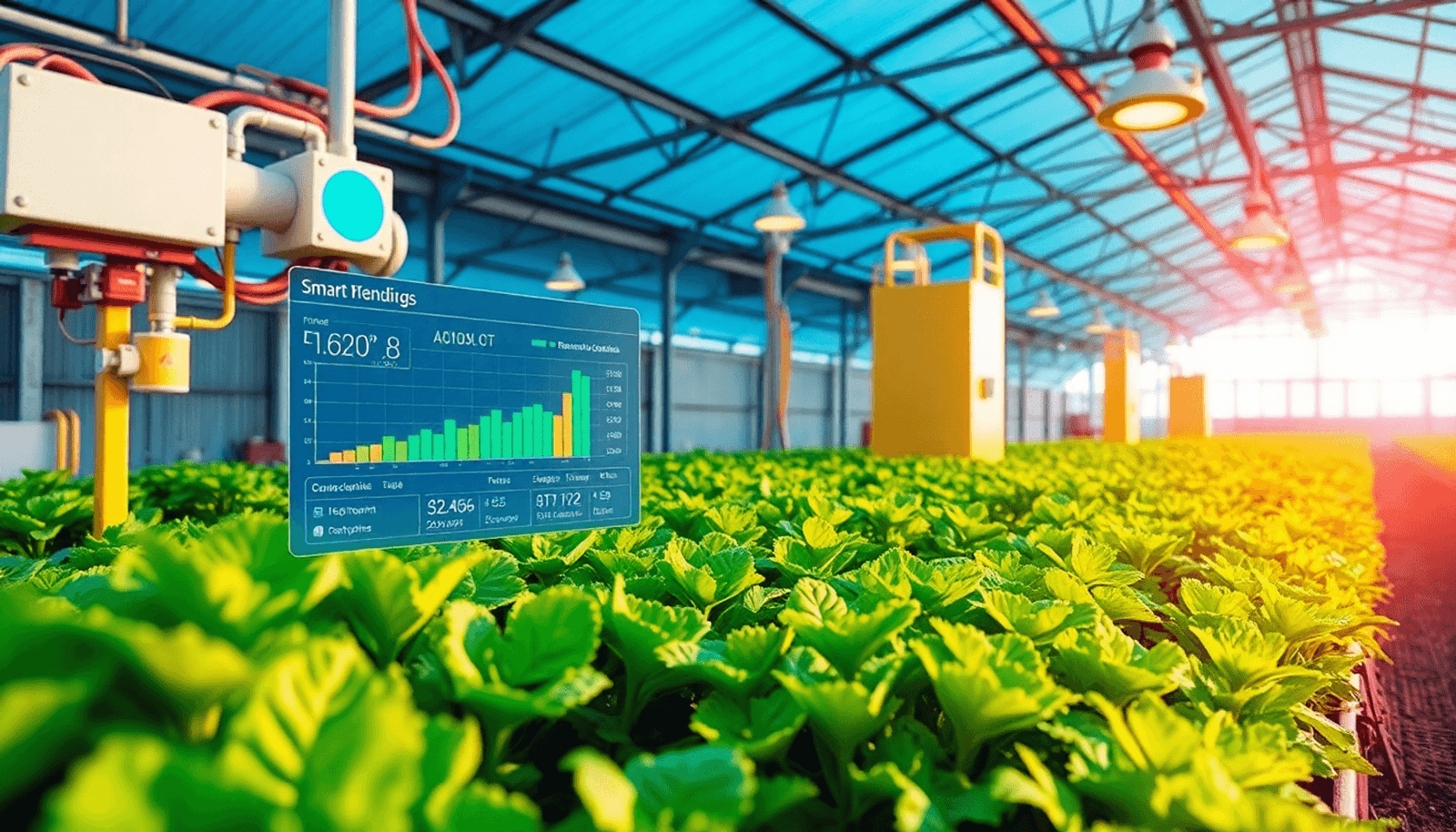 Smart Automation Benefits
Smart Automation Benefits
